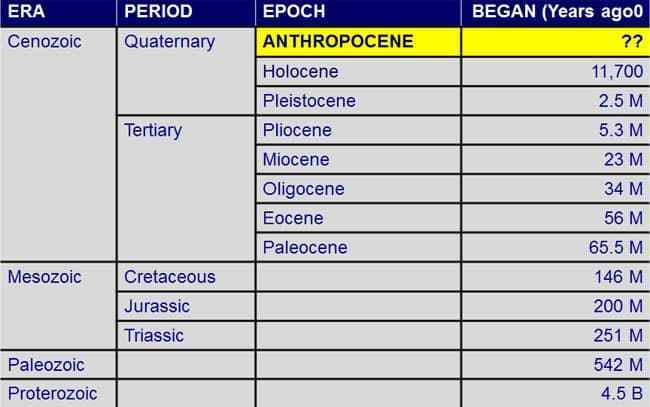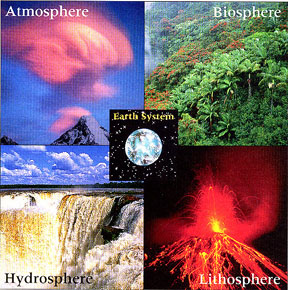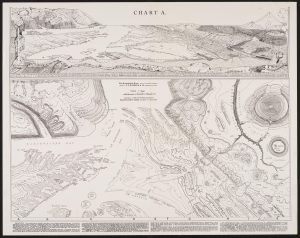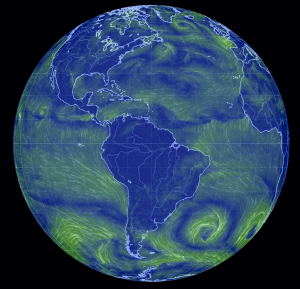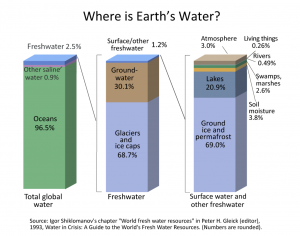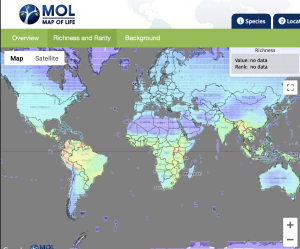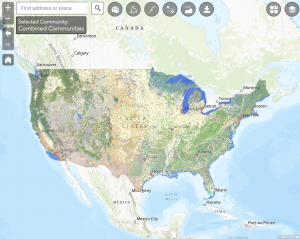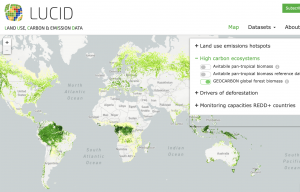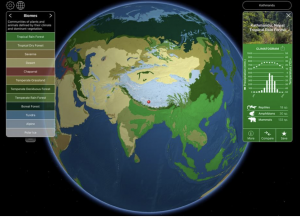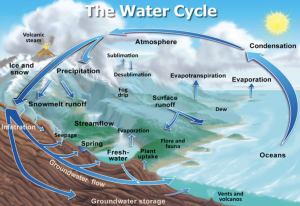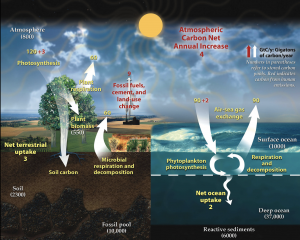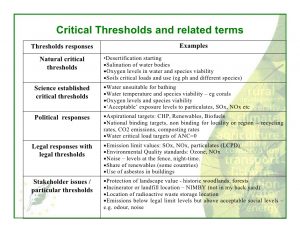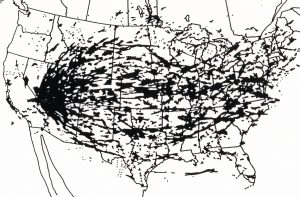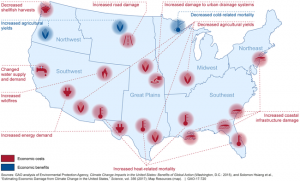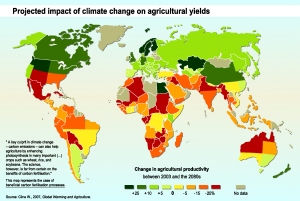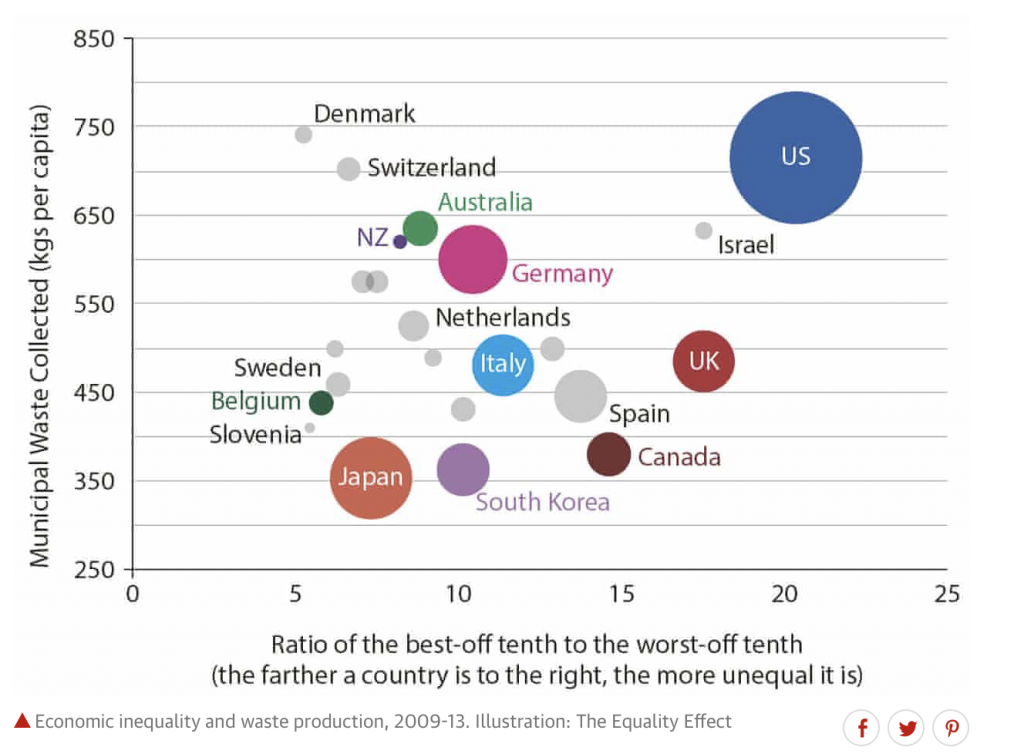Update 1/14/2025
 |
See Bigfoot’s “buttocks imprint” in Blue Ridge, Georgia |
Nature?
Nature is perhaps the most complex word in the English language.
(i) the essential quality and character of something: “That’s just the nature of love” (essence, intrinsic)
(ii) the inherent force which directs either the world or human beings or both: “gravity is a natural force”
(iii) the material world itself, taken as including or not including human beings: “Humans are having a huge impact on nature”
(Source: Raymond Williams, “Nature” from Keywords, 1983)
Nature is complicated
Nature or Environment?
- Nature is often used to mean the non-human world (last definition)
- Environment is often used when we mix in human relationships to the non-human world
In theory, we can think about humans as separate from the non-human world:
Humans throughout history have often elevated themselves (ourselves) above non-human nature
- Religion, philosophy, and the sciences have played a significant role in this distinction
- ex) Judeo-Christian Tradition / Bible
The sciences often look at humans and non-human nature in relative isolation: reinforcing the distinction
- the natural sciences typically remove social and cultural factors
- the social sciences typically remove natural factors
Understanding the big picture – particularly with environmental issues – requires joining the natural and the social
Nature + Humans: the Anthropocene
Anthropocene: (an·thra·puh·seen) “an informal term used to mark when human actions begin to have a global impact on Earth’s environment” (Companion to Environmental Studies, p. 144)
International Geological Congress, Anthropocene Working Group: moving towards adoption of this period as part of the Geological Time Scale (source)
Contested no vote earlier this year… but it will be reconsidered.
Above: Geological Time Scale with proposed Anthropocene (source)
Blurs the boundary between humans and non-human nature: humans are a global, geological-scale force
One perspective on the Anthropocene: Environmental Cornucopian (“horn of plenty”): “So what?”
- Environmental problems caused by humans can be solved by technology and free market capitalism
- dubious about regulations or constraints on human actions on the environment
- The ideas of finite resources or “to many people” are false: innovation (via markets, Capitalism) can overcome both
- Anthropocentric views: Humans are the most important part of existence
- Thus: who cares if it does not affect us? “Earth’s sixth mass extinction has begun according to scientists“
Another perspective: Political Economy (interrelationships among individuals, governments, and public policy)
Amitav Ghosh (The Nutmeg’s Curse, 2021): paraphrased from here.
The Anthropocene likely began around 1500 with the impact of European Colonialism
Book title: 1621 massacre by Dutch invaders: establish a monopoly on nutmeg cultivation and trade in the Banda islands in what is now Indonesia. At the same time, systematically depopulating the islands through genocide.
The impact of anthropocentrism, capitalism, and economic markets:
• Decimation and exploitation of indigenous populations
• Decimation of indigenous understanding of the relationship between humans and Earth
• Decimation of non-human nature
• Decimation of environmental sustainability
Political Ecology: A general approach to the environment that weds ecology to a broadly defined political economy perspective; in essence the approach taken by Ghosh and in the textbook.
Tough issues to solve, or even make sense out of
Even more challenging:
- We love the benefits this approach to nature provides for us (particularly the privileged we).
- It’s easy to delude ourselves that solutions are easy.
Alternatively, despair and pessimism are bad.
How can you – maybe – do something that does have a positive impact, even if on a limited scale?
The focus of this class: we will learn about the research process and use the resources available through the OWU Connection.
We won’t solve global environmental crises. We will take a step in the right direction. Make the world a better place – at some scale.
Part of this effort involves concepts and ideas.
RHM textbook, Environment & Society:
Ecological novelty: Ecological systems that existed in the past are being swept away by rapidly changing environmental conditions – changes in climate, species interaction, the spread of micro- and macro-organisms. (p. 3)
- environmental change has always occurred, it’s the rate of change that is nearly unprecedented
- it’s also the uncertainty of human survival in this time of rapid change
Can we reverse this process?
Rewilding: A practice of conservation where ecological functions and evolutionary processes, which are thought to have existed in past ecosystems or before human influence, are deliberately restored or created; rewilding often requires the reintroduction or restoration of large predators to ecosystems (p. 3)
- But: which animals are reintroduced, or not?
- The Wilds (Ohio): why
elephants(too expensive) rhinos and giraffes in Ohio? - Wandering around reclaimed (coal) strip mines?
- The Wilds (Ohio): why
- Is it fair to exclude people (with their long history far back into prehistory) in the wilderness area?
- Is it a good idea to use Nazi-bred Heck Cattle (given that other older cattle species are extinct)?
- WTF Nazi cows?
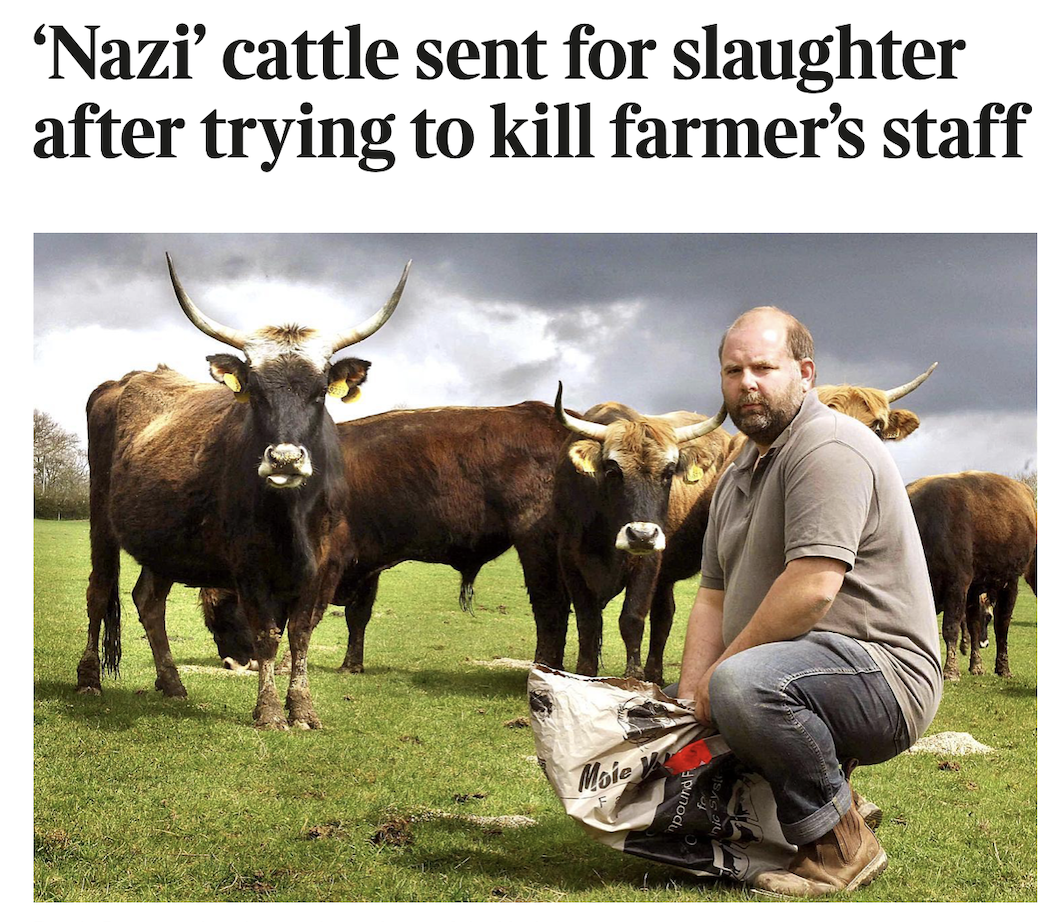
- Why were the Nazi’s breeding early (now extinct) breeds of cattle?
- WTF Nazi cows?
- Is the cost worth it, given other (social) needs?
So is stuff Natural or Social? “Simultaneously neither and both, with animals, plants and waterways springing from human interventions, creating altogether new habitats and environments.”
Decisions about what to do (and what not to do) requires understanding natural sciences as well as social sciences (and humanities and arts)
Back to the Anthropocene:
Anthropocene: An era where humans exert tremendous influence on the environment but where control of these environments and their complex ecologies is elusive. Humans are a major force of nature yet the outcomes of our impacts are unknown.
RHM textbook, Environment & Society:
- First half: perspectives: “dominant ways of thinking about environment-society relations”
- there are many more… you will encounter in courses and elsewhere
- shape how people think about and impact the environment
- common core themes in environmental courses
- Second half: perspectives “applied to familiar objects of the world around us.”
- don’t see only problems and crises: important
- “An opportunity to break away from the environment as an undifferentiated generic problem, one universally characterized by a state of immediate and unique crisis.”
- the problem with apocalyptic catastrophism & the environment
- apocalyptic: “describing or prophesying the complete destruction of the world.”
- catastrophism: “involving or causing sudden great damage or suffering.”
A generalized process: book, class, class project
- Understand the natural and the social together focused on varying environmental perspectives
- Understand common objects embedded in natural and social contexts
- Understand how environmental problems (at a range of scales) arise from this complex context
- Define solutions to these problems
Reconciliation Ecology: A hopeful approach that seeks ways for both humans and the non-human world to thrive and exist in a sustainable manner. Requires an imaginative integration of humans and the natural world that ultimately benefits both.
Next Time: The Project, Groups for Chapter Presentation, Project Ideas
To Project Page
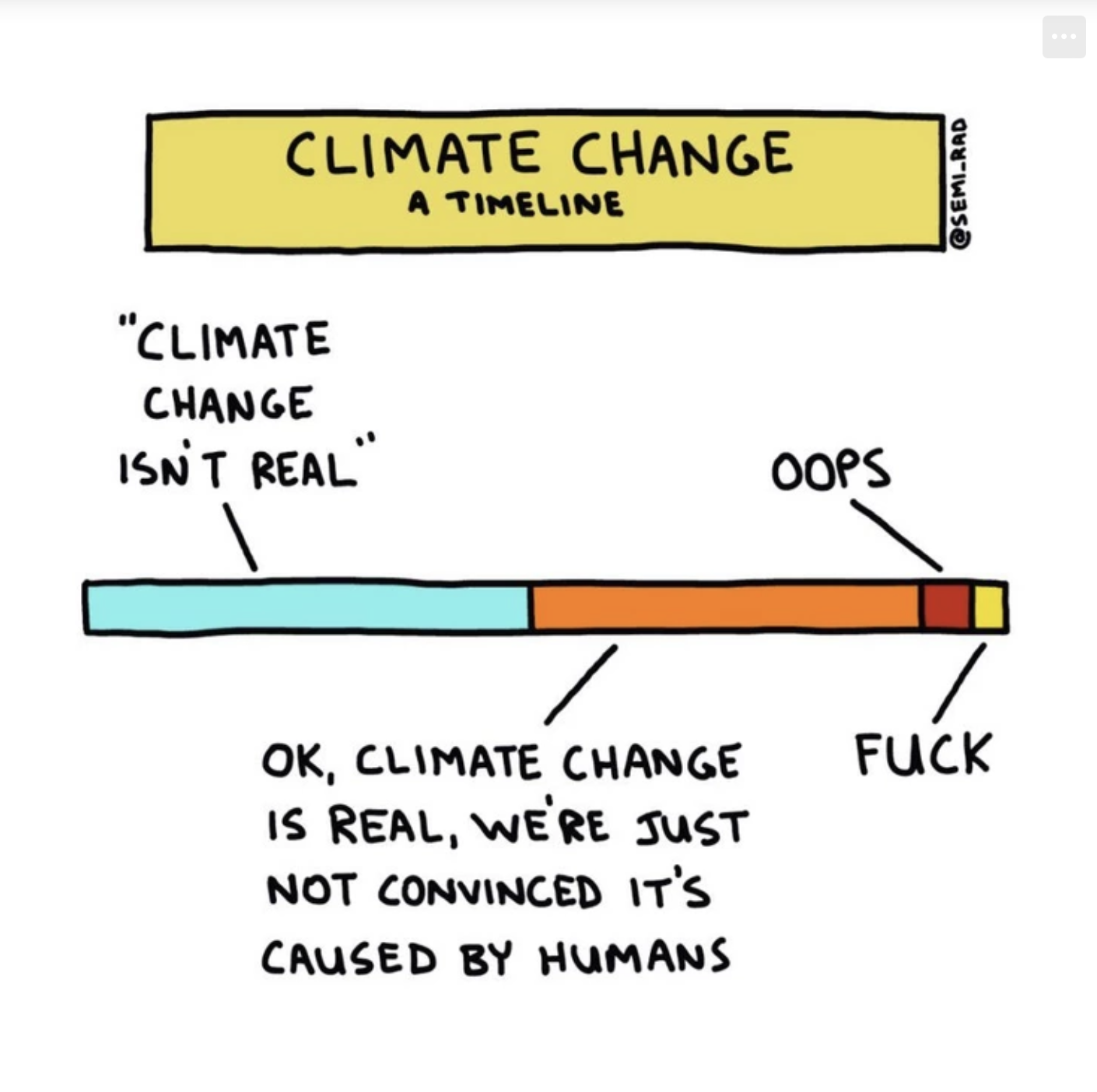
Review Material: A bunch of stuff you can review if you want which you won’t
Nature shapes humans (culture, society) and culture and society shape nature
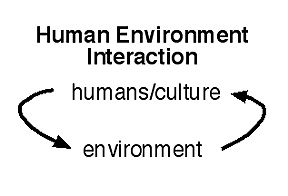 Human Environmental Cycle
Human Environmental Cycle
How to make sense out of this relationship is at the core of understanding the environment – and nature – and humans
Next up:
- Basics about the natural environment (with humans left out, for the moment)
- Then some key ways to approach Human & Environmental Interactions
Natural Environment
1a. Environmental Spheres and the Earth System
- Classification based on differences in matter
- Biotic (living) and abiotic (non-living) things and conditions:
Lithosphere: Greek (litho) = stone
- courses in Physical Geography
Atmosphere: Greek (atmo) = air
- courses in weather and climate (Physical Geography)
Hydrosphere: Greek (hydro) = water
- course in hydrology (we are working on it…)
Biosphere: Greek (bio) = life
- courses in Botany and Zoology (Biology)
But: the four spheres are not discrete and separate but intermingled
1b. Ecosystems and Biomes
- Courses in ecology (Botany and Zoology)
- Classification based on interactions
Ecosystem: a group of environmental characteristics that define a particular area; the totality of interactions among organisms and the environment in the area of consideration; elements from all the earthly spheres
Many ways to classify ecosystems
- classify according to the amount of organic matter – biomass – produced per year
- classify according to the relationship between climate (atmosphere) and the biosphere
Biomes: large areas of the earth can be categorized as relatively distinctive, with particular climate, animals, plants: a large, recognizable assemblage of plants and animals in functional interaction with its environment
Major World Biomes
Allee (1949) biome-types
- Tundra
- Taiga (coniferous forest)
- Deciduous forest
- Grasslands
- Desert
- High plateaus
- Tropical forest
- Minor terrestrial biomes
But… many different ways to classify biomes… Kendeigh (1961), Whittaker (1962, 1970, 1975) … and so on: Wikipedia Biomes
2. Natural Cycles
- physical changes (through time and over geographic space) in matter
Natural cycles are cycles of matter in the natural world: where molecules are formed and re-formed by chemical and biological reactions, manifested as physical changes in the matter
2a. The Hydrologic Cycle
2b. The Carbon Cycle
- respiration of animals: carbon moves from litho/biosphere to atmosphere
- photosynthesis: green plants convert atmospheric carbon to complex sugar compounds
- amount of time carbon remains at a particular place in the cycle varies
Lots of other environmental cycles: Google
Important: can’t change one part of a system without having some effect on another part of the same system, and other cycles and systems
One of the reasons we don’t have a sense of the effects of our modification of these natural systems is that they are often out of sync with our particular time and location
3. Time and Space and Environmental Change
3a. Time and Environmental Change
Geologic Time and Important Events
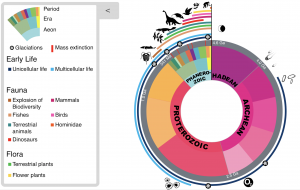 (source)
(source)
- Time scale chosen to study natural systems affects understanding
Dynamic equilibrium: input and output of matter in natural systems is balanced, but there are shorter-term fluctuations
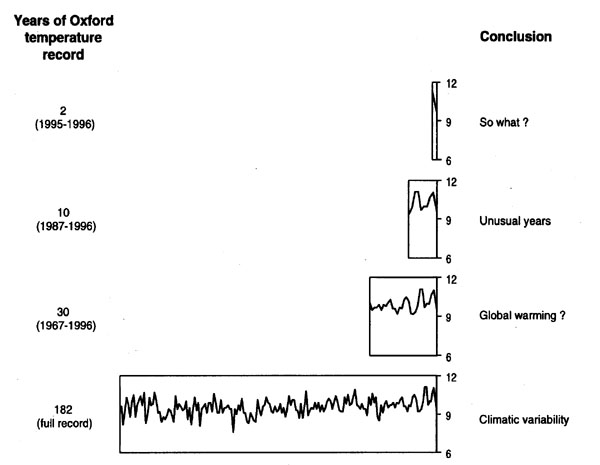
- Source: Middleton, The Global Casino (2003), Fig. 1.9: Time scale and Oxford England Temperatures
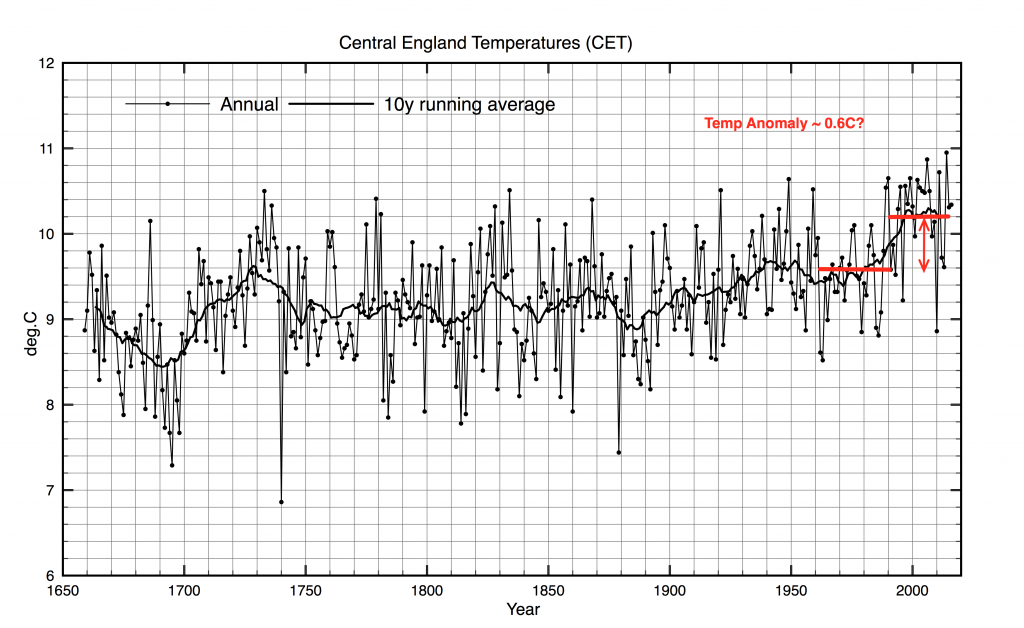
- Source: Central England Temperatures
- different time-scales of analysis: different conclusions
Feedback in a natural system
- negative feedback: maintains dynamic equilibrium
- ex) circulation of oceans and atmosphere redistributes energy (heat)
- positive feedback: drives changes away from the original equilibrium state
- ex) increases in greenhouse gasses in the atmosphere drives up average temperatures over time
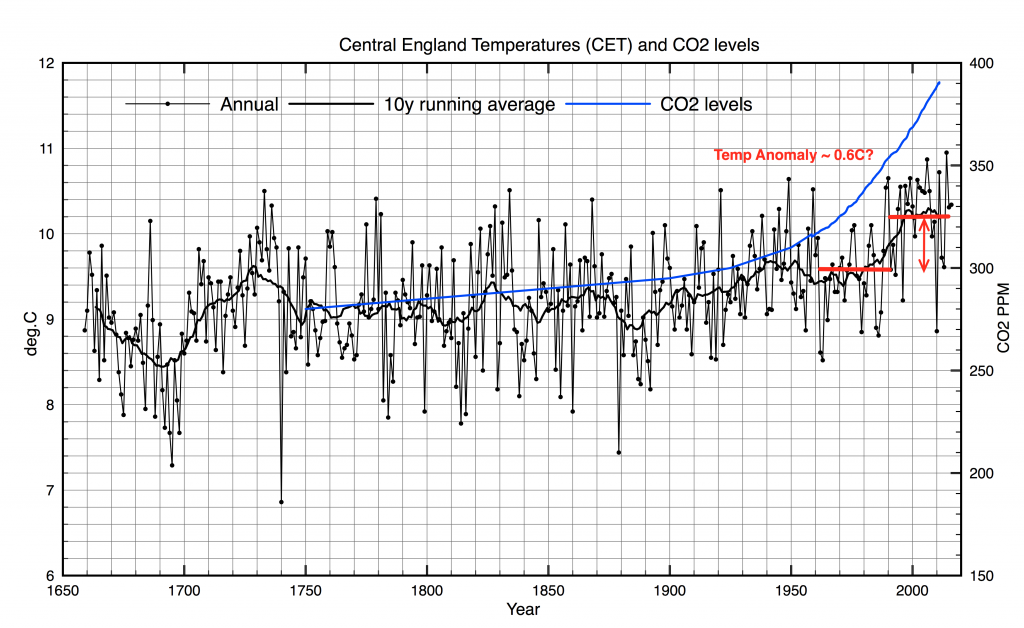
- Source: Central England Temperatures
Thresholds: a change in a system may not occur until a threshold is reached: a breaking or tipping point after which the system shifts to a different state
(source)
- certain places (ecosystems, biomes) more sensitive to thresholds and feedback: where (geography) matters
3b. Space / Geography and Environmental Change
Spatial location and scale also affect our understanding of environmental change:
- Areas of the US crossed by more than one nuclear cloud from aboveground detonations: (source)
- Costs and benefits, impact of climate change (US): (source)
Projected impact of climate change on agricultural yields by the 2080s, compared to 2003 levels (source)
Important “tipping points” in the Earth’s Climate System: (source)
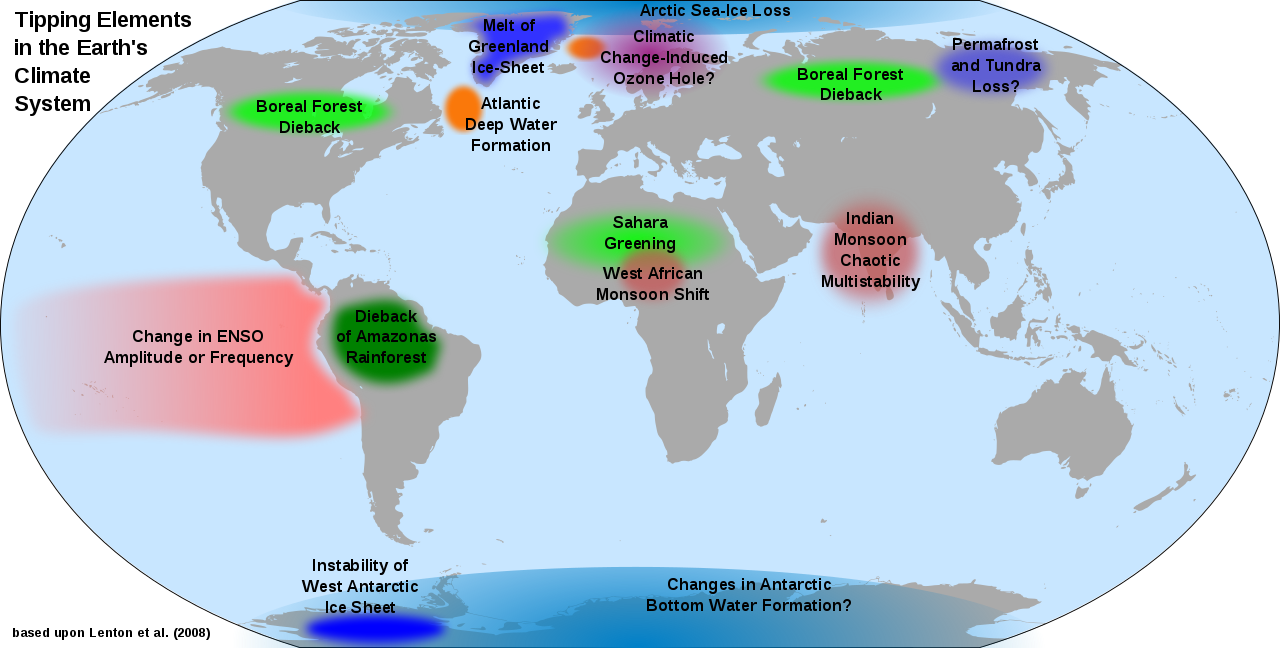
Environmental issues we will discuss this semester have arisen as a consequence of human activity interacting with environmental systems
- have a basic understanding of how natural systems work
- where (descriptive: classification) and why (analysis, explanation)
- vital to consider effects on other time and spatial scales
Back to the Anthropocene
The concept has certainly had an impact beyond Geology:
The Anthropocene is about the consequences of the production and reproduction of the means of existence of social life on a planetary scale.
It seems likely that the Anthropocene as a kind of periodization more or less corresponds to the rise of capitalism.
Means for enduring the Anthropocene are not going to be exclusively cultural or political, let alone theological. They will also have to be scientific and technical.
And in the present, it is time to work transversally, in mixed teams, with the objective of producing forms of knowledge and action that are problem-centered rather than tradition and discipline centered.
Source: Critical Theory After the Anthropocene, McKenzie Wark ( August 9, 2014)
Next: Is this class about everything?
Nature >> Environment >> The Anthropocene >> Human/Environment Interaction >> Everything?
Environmental Geography: historically, Geographers were among the first scholars to explicitly note and study human/environmental relationships. Human stuff, natural stuff, all together in space and over time.
Political Ecology: “the study of the relationships between political, economic and social factors with environmental issues and changes. Political ecology differs from apolitical ecological studies by politicizing environmental issues and phenomena.” (source)
Environment and Society: A more generic term than political ecology, broader maybe, but following the tradition of environmental geography and political ecology.
- Ways of thinking: Approaches and Perspectives to Environment & Society
- Problem or object-based (“follow the thing”) approach
Few More Concepts and Definitions
 Human Environmental Cycle
Human Environmental Cycle
Resources: anything in the natural world that is useful to humans; a cultural appraisal of the natural world, as different cultures (and the same cultures at different times) assume certain things to be resources and others not
Resources in the Natural Environment
- renewable resources: solar, wind, forests
- non-renewable resources: coal, oil, gas, nuclear
Resources in the Human Environment
- extrinsic resources: “human” resources or activity; “A natural resource that has been adapted or modified by people in order to provide additional values, particularly for recreation. Examples include historic sites and archaeological sites.” (source)
Environmental problems can be seen as the result of a mismatch between extrinsic resources and natural resources; they stem from people deliberately or inadvertently misusing or abusing the natural environment.
Driving and Mitigating Forces
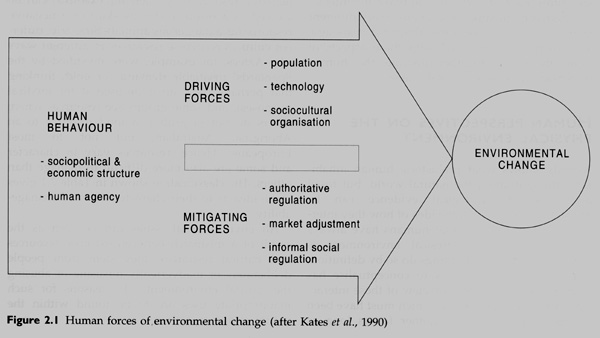
- Above: Middleton Global Casino, fig 2.1: Human Forces of Environmental Change
Example: Population (we will come back to population in more detail)
- Driving force: more people, more natural resources required
- Mitigating force: limit the number of people to limit required natural resources
Example: Technology
- Driving force: the desire for mobility and the development of the internal combustion (carbon-based fuel) engine
- Mitigating force: electric vehicles, public transportation, stay at home
Human-Induced Imbalances
- Imbalances created and maintained by economics, culture, and society
- Imbalances – economic and political – are important driving forces behind environmental change
Example: unequal distribution of wealth produces more CO2:
2016 Oxfam Study: the greatest polluters of all were the most affluent 10% of US households: each emitted, on average, 50 tonnes of CO2 per household member per year. Canada’s top 10% were the next most polluting, followed by the British, Russian and South African elites.
In more equitable affluent countries such as South Korea, Japan, France, Italy and Germany, the rich don’t just pollute less; the average pollution is lower too, because the bottom half of these populations pollute less than the bottom half in the US, Canada or Britain, despite being better off.
In short, people in more equal rich countries consume less, produce less waste and emit less carbon, on average. Indeed, almost everything associated with the environment improves when economic equality is greater. (source)
Example: Unequal distribution of wealth produces more waste (source):
Sustainability
Everything that we need for our survival and well-being depends, either directly or indirectly, on our natural environment. To pursue sustainability is to create and maintain the conditions under which humans and nature can exist in productive harmony to support present and future generations. (Source: US EPA)
Closely tied to economic development:
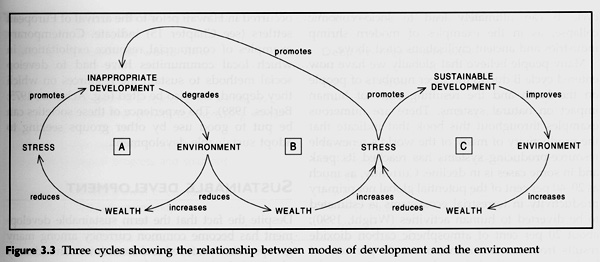
- Above: Middleton, Global Casino, fig 3.3: Development and Environment
- cycle A: typical of global economy in historical times
- cycle B: when cycle A crosses an environmental threshold
- cycle C: sustainable development
Sustainable Development
A compromise between economic development, the creation of wealth, and the exploitation of natural resources on one hand, and stewardship and conservation of natural resources and the natural environment on the other
Origins in a Report: World Conservation Strategy (1980): All economic development programs should
- maintain ecological processes
- promote sustainable use of resources
- maintain genetic diversity
Developed further by the Brundtland Commission: United Nations, 1983
- Sustainable development: “development which meets the needs of the present without compromising the ability of future generations to meet their own needs” (World Commission on Environment and Development, 1987)
Sustainable development draws together environmental, social, and economic concerns: basic guiding principles:
- continued support of human life
- maintenance of environmental quality and long-term stock of biological resources
- right of future generations to resources of equal worth to those used today
Key issue in sustainable development: relative roles of
- economic growth: quantitative expansion of economies
- development: qualitative improvement of society
We can improve human lives and society (development) with very slow or no economic growth by being more efficient and careful with our use of resources
